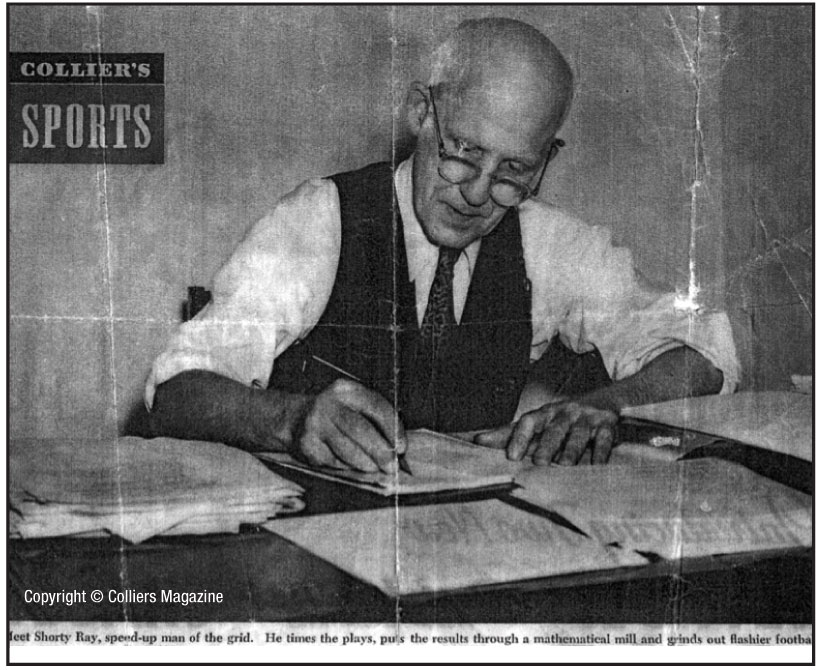
The following are just a handful of the hundreds of innovative playing rules that Ray devised. His work transformed the game making it safer, faster and more exciting. Today, because of Ray’s work, the NFL has become the most popular and prosperous sports league in America.</>
1927 – Ray suggests 30-second rule to NCAA through Amos
Alonzo Stagg for game-tempo.
1933 – Hugh Ray invented the hashmark (inbounds line)
spotting the ball 10 yards in from sidelines to get the game
moving from goal line to goal line rather from sideline to
sideline.
1933-34 – Shorty Ray wrote the rule that allowed passing
anywhere behind the line, and then went on to author more
than 20 rules to design the modern passing game.
1934 – Ray reduced the width of the football by an inch
giving it a more aerodynamic design for the colleges and
pros, he reduced the high school ball by an inch and a half
for smaller hands.
1934 – Ray moved the hashmark 15 yards in from the
sidelines for the high schools, the NFL followed in 1935,
and the NCAA in 1938.
1935 – Ray made the use of helmets (head protectors)
mandatory for the high school game. The NCAA followed
in 1939, and the NFL in 1943.
1939 – Ray’s first scientific study proved passing gains 75%
more yardage per play than running and there is 40% less blocking associated with it. So it’s much safer for the players.
1941- Ray establishes free substitution for the high schools,
and the NFL adopts it in 1948. The NCAA adopted Ray’s
seminal rule in 1974.
1948 – Ray equipped each official with a whistle. Now all
officials had equal authority to stop play, save time, and
reduce injuries. Ray also introduced the penalty flag for
rules infractions.
1933-52 – Ray’s rules add 25% more plays per game and triple
the average score of an NFL game from two touchdowns to six.





